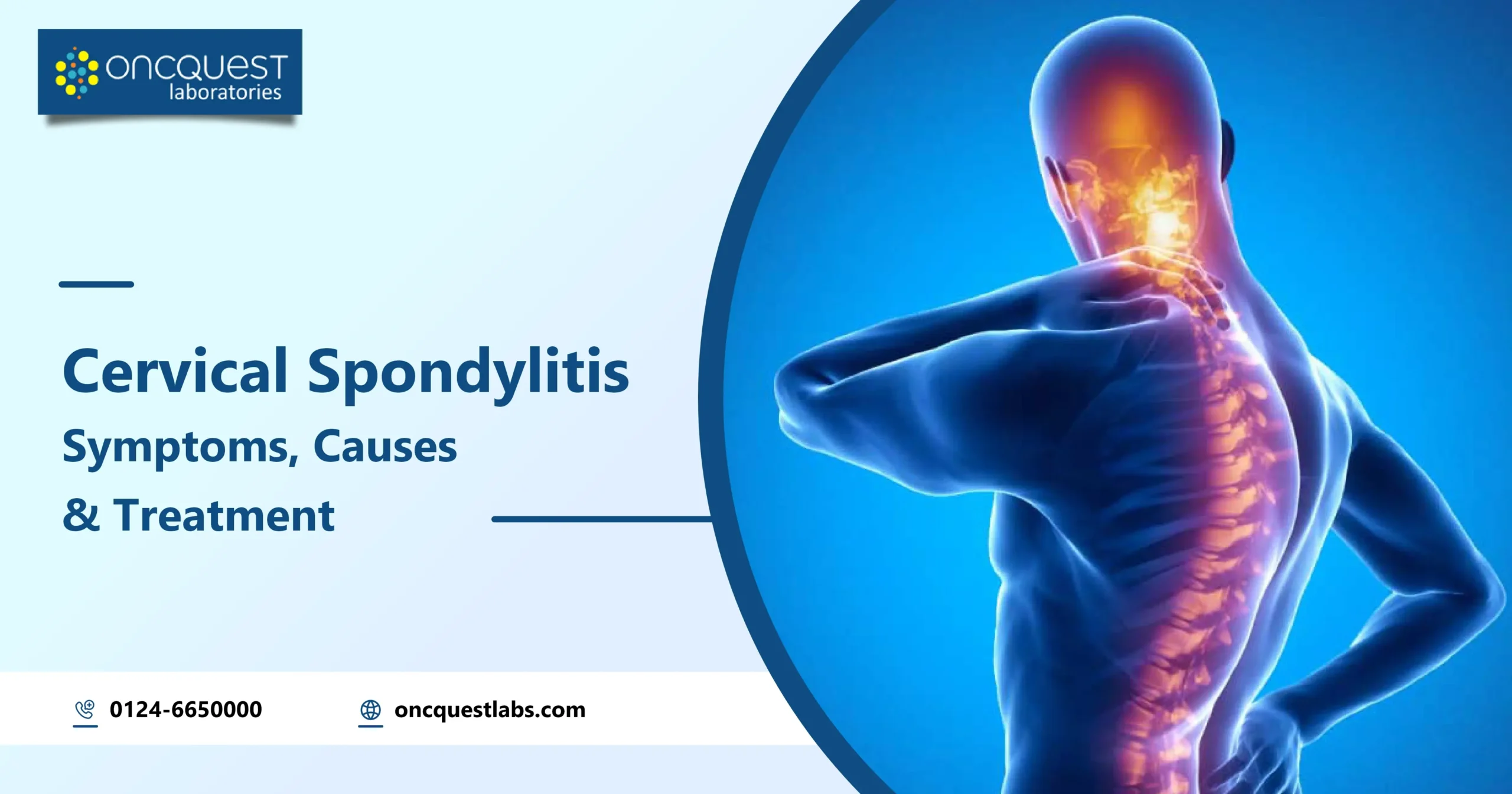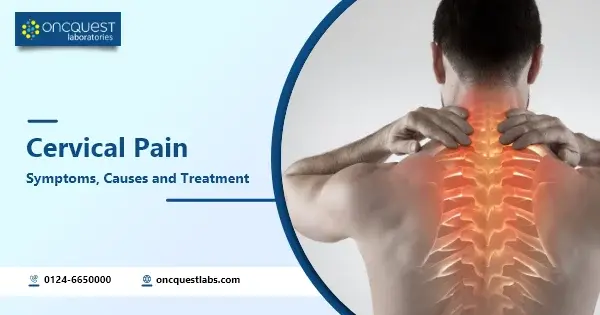Cervical spondylitis, a prevalent but often misunderstood condition, affects a significant number of individuals worldwide. This blog aims to unravel the intricacies of cervical spondylitis, shedding light on its symptoms, causes, and treatment options. As a condition that primarily impacts the neck and upper spine, cervical spondylitis can significantly hinder daily life, making awareness and comprehension crucial.
Beyond diagnosis, our journey continues into the realm of treatment options, encompassing both conservative approaches and, in some cases, surgical interventions. Moreover, we will explore lifestyle modifications that can play a pivotal role in managing cervical spondylitis and preventing its progression.
Through this comprehensive guide, our goal is to empower readers with knowledge about cervical spondylitis, equipping them to make informed decisions about their health. Whether you’re seeking information for yourself or someone you know, join us on this enlightening journey into the world of cervical spondylitis.
Contents
What is Cervical Spondylitis?
Cervical spondylitis, also known as cervical osteoarthritis or neck arthritis, is a degenerative condition that affects the cervical spine – the seven vertebrae that form the neck. It involves the wear and tear of the cartilage and bones in the neck, leading to various symptoms and discomfort.
The condition typically arises due to the aging process, where the discs and joints in the neck experience gradual deterioration. As a result, individuals with cervical spondylitis may experience pain, stiffness, and reduced flexibility in the neck region. In some cases, bone spurs may develop, further contributing to the discomfort.
While cervical spondylitis is often associated with aging, it can also be influenced by factors such as poor posture, a sedentary lifestyle, or a genetic predisposition. Understanding the symptoms and causes of cervical spondylitis is crucial for timely diagnosis and effective management.
Symptoms of Cervical Spondylitis
Cervical spondylitis, a condition affecting the neck’s vertebral region, presents itself through an array of symptoms that can impact daily life. Understanding these signs is crucial for timely diagnosis and effective management.
1. Neck Pain:
• Persistent discomfort ranging from mild to intense is a defining characteristic.
• The pain may be localized or extend to other areas.
2. Stiff Neck:
• A notable stiffness in the neck, limiting the range of motion.
• Difficulty in turning or tilting the head.
3. Headaches:
• Frequent headaches originating from the neck.
• Pain may radiate to the back of the head.
4. Shoulder and Upper Limb Pain:
• Pain extending to the shoulders, arms, and hands.
• Possible tingling or numbness in these areas.
5. Muscle Weakness:
• Weakness in arm and hand muscles.
• Impact on grip strength and fine motor skills.
6. Pain with Movement:
• Exacerbation of pain with certain neck movements.
• Prolonged sitting or standing may contribute to discomfort.
7. Coordination Challenges:
• Difficulty with balance and coordination.
• Influenced by the impact of cervical spondylitis on nerve function.
8. Cracking or Popping Sensations:
• Audible sounds during neck movements due to joint friction.
• Commonly experienced by individuals with degenerated joints.
9. Difficulty Swallowing:
• Occasional difficulty in swallowing (dysphagia).
• Less common but noteworthy in severe cases.
10. Radiating Pain:
• Pain radiating from the neck to upper back or chest.
• The specific areas affected vary from person to person.
Recognizing these symptoms empowers individuals to seek timely medical attention. Early intervention and appropriate management can significantly enhance the overall well•being of those grappling with cervical spondylitis.
Causes of Cervical Spondylitis
Understanding these causes is essential for both prevention and effective management. Let’s explore the key contributors to cervical spondylitis:
1. Age-Related Wear and Tear:
• As individuals age, the discs and joints in the neck naturally undergo degeneration.
• This wear and tear contributes to the development of cervical spondylitis.
2. Genetic Predisposition:
• Family history plays a role, as there can be a genetic predisposition to spine-related conditions.
• Individuals with a family history of cervical spondylitis may be more susceptible.
3. Poor Posture and Lifestyle Habits:
• Prolonged periods of poor posture, especially while sitting or standing, can strain the neck.
• Sedentary lifestyles and lack of regular exercise may contribute to the development of cervical spondylitis.
4. Occupational Factors:
• Jobs requiring repetitive neck movements or prolonged desk work can increase the risk.
• Poor ergonomics at the workplace may contribute to strain on the cervical spine.
5. Injuries and Trauma:
• Past neck injuries, such as whiplash or fractures, can lead to long-term damage.
• Trauma from accidents or falls may accelerate the degenerative process.
6. Smoking and Excessive Alcohol Consumption:
• Smoking has been linked to accelerated disc degeneration in the spine.
• Excessive alcohol intake can also contribute to the breakdown of spinal structures.
7. Lack of Physical Activity:
• Inadequate exercise and a sedentary lifestyle can weaken the muscles supporting the spine.
• Regular physical activity helps maintain spine health and reduces the risk of cervical spondylitis.
8. Obesity:
• Excess weight puts additional stress on the spine, particularly the cervical region.
• Obesity is a contributing factor to the development and progression of cervical spondylitis.
Understanding these causes empowers individuals to adopt preventive measures and make lifestyle choices that promote neck health. While some factors are beyond control, a proactive approach to maintaining a healthy lifestyle and seeking early intervention can significantly mitigate the impact of cervical spondylitis.
Diagnosing Cervical Spondylitis
Diagnosing cervical spondylitis involves a thorough examination and consideration of various factors. Healthcare professionals employ a combination of medical history, physical assessments, and diagnostic tests to accurately identify and understand the extent of the condition. Here is an overview of the diagnostic process for cervical spondylitis:
1. Medical History:
• Gathering information about the individual’s symptoms, their onset, and their progression.
• Identifying any relevant medical history, including previous neck injuries or conditions.
2. Physical Examination:
• A detailed examination of the neck, shoulders, and upper limbs to assess range of motion, pain, and stiffness.
• Checking for muscle weakness, reflexes, and signs of nerve involvement.
3. Neurological Examination:
• Assessing neurological function to detect any abnormalities in sensation, strength, or reflexes.
• Identifying potential nerve compression or damage.
4. Imaging Studies:
• X-rays: Providing detailed images of the bones in the neck, revealing bone spurs or changes in joint spacing.
• MRI (Magnetic Resonance Imaging): Offering more detailed views of soft tissues, discs, and nerves, aiding in the evaluation of nerve compression.
5. CT Scan (Computed Tomography):
• Utilized for a more in•depth examination of bony structures, particularly when assessing the extent of bone spurs or fractures.
6. Blood Tests:
• While there are no specific blood tests for cervical spondylitis, certain tests may be conducted to rule out other conditions with similar symptoms, such as rheumatoid arthritis.
7. Electromyography (EMG) and Nerve Conduction Studies:
• Conducted to evaluate nerve function and identify any abnormalities or compression affecting the nerves.
8. Discography:
• In some cases, a contrast dye may be injected into the discs of the cervical spine to identify specific areas of pain and degeneration.
The combination of these diagnostic approaches allows healthcare professionals to form a comprehensive understanding of the individual’s condition. Diagnosing cervical spondylitis is a meticulous process that enables the development of a tailored treatment plan, addressing both the symptoms and underlying causes. Early and accurate diagnosis plays a crucial role in ensuring effective management and improved quality of life for individuals with cervical spondylitis.
Treatment Options
Cervical spondylitis management involves a range of treatment options aimed at alleviating symptoms, improving functionality, and addressing the underlying causes. The choice of treatment depends on the severity of symptoms, individual health factors, and the extent of degeneration. Here’s an overview of various treatment options:
1. Conservative Approaches:
• Rest and Activity Modification: Adequate rest and modifying activities to avoid excessive strain on the neck.
• Physical Therapy: Targeted exercises and stretches to improve flexibility, strengthen neck muscles, and enhance posture.
2. Pain Management:
• Medications: Non-steroidal anti•inflammatory drugs (NSAIDs) to reduce pain and inflammation.
• Muscle Relaxants: Prescribed to alleviate muscle spasms and stiffness.
• Pain Modifiers: Antidepressants or anticonvulsants in some cases to modify pain perception.
3. Use of Orthopedic Devices:
• Neck Collars or Braces: Temporary use to support the neck and limit movement during the healing process.
4. Heat and Cold Therapy:
• Application of heat or cold packs to the affected area to reduce inflammation and relieve pain.
5. Injections:
• Corticosteroid Injections: Administered directly into the affected joints to reduce inflammation and pain.
• Nerve Block Injections: Targeted at specific nerves to alleviate pain and discomfort.
6. Surgical Interventions:
• Reserved for severe cases or when conservative measures fail.
• Discectomy: Removal of a portion of a herniated disc.
• Spinal Fusion: Joining two or more vertebrae to stabilize the spine.
7. Lifestyle Modifications:
• Posture Correction: Emphasizing proper ergonomics at work and home to reduce strain on the neck.
• Weight Management: Maintaining a healthy weight to minimize stress on the cervical spine.
8. Regular Exercise:
• Incorporating neck-specific exercises and stretches into a regular exercise routine.
• Promoting overall physical fitness to support spine health.
9. Alternative Therapies:
• Acupuncture: Some individuals find relief from pain through acupuncture sessions.
• Chiropractic Care: Manipulative techniques to improve spinal alignment and alleviate symptoms.
10. Educational Support:
• Providing education on proper ergonomics, lifestyle modifications, and self-care practices.
Individuals with cervical spondylitis often benefit from a combination of these approaches. A personalized treatment plan, crafted in consultation with healthcare professionals, ensures a comprehensive and effective strategy to manage cervical spondylitis and enhance neck health. Regular follow•ups and adjustments to the treatment plan are crucial for ongoing care and symptom management.
Lifestyle Modifications
Adopting lifestyle modifications is a pivotal aspect of managing cervical spondylitis, contributing to improved symptoms and overall neck health. These adjustments aim to minimize strain on the cervical spine and enhance the effectiveness of treatment. Here are essential lifestyle modifications for individuals dealing with cervical spondylitis:
1. Maintain Proper Posture:
• Be mindful of posture during daily activities, whether sitting at a desk, using electronic devices, or standing.
• Use ergonomic chairs and accessories to support a neutral spine position.
2. Regular Exercise:
• Incorporate neck-specific exercises and stretches into daily routines to improve flexibility and strengthen neck muscles.
• Engage in overall fitness activities, such as walking or swimming, to enhance overall spine health.
3. Weight Management:
• Maintain a healthy weight to reduce the stress on the cervical spine.
• Adopt a balanced diet and engage in regular physical activity to support weight management.
4. Appropriate Workstation Ergonomics:
• Ensure your desk and chair are at the right height to promote a neutral spine position.
• Use a monitor at eye level to reduce strain on the neck during computer work.
5. Regular Breaks and Movement:
• Take breaks during prolonged periods of sitting or standing to stretch and change positions.
• Perform gentle neck stretches and movements throughout the day to prevent stiffness.
6. Pillow and Mattress Selection:
• Choose a supportive pillow and mattress that align with the natural curve of the neck and spine.
• Consider cervical pillows that provide additional neck support during sleep.
7. Avoid Excessive Neck Strain:
• Limit activities that involve repetitive neck movements or prolonged periods of looking down.
• Be cautious during activities that may strain the neck, such as heavy lifting.
8. Stress Management:
• Practice stress-reducing techniques, such as deep breathing, meditation, or yoga, as stress can contribute to muscle tension.
• Ensure adequate sleep to promote overall well•being.
9. Hydration and Nutrition:
• Stay hydrated to support the hydration of spinal discs.
• Consume a balanced diet rich in vitamins and minerals essential for bone and joint health.
10. Educational Awareness:
• Stay informed about cervical spondylitis and its management.
• Seek guidance from healthcare professionals on lifestyle adjustments specific to individual needs.
By integrating these lifestyle modifications into daily routines, individuals with cervical spondylitis can actively contribute to their well•being. Consistency in these practices, coupled with medical interventions and regular check•ups, forms a holistic approach to managing cervical spondylitis and promoting long•term neck health.
Conclusion
In the pursuit of neck health, our journey through cervical spondylitis unveils a roadmap to empowerment. Knowledge transforms into strength as we comprehend symptoms, causes, and treatments. Lifestyle modifications, preventive strategies, and timely interventions emerge as keystones, fostering resilience against neck challenges. With a commitment to posture, exercise, and overall well•being, we navigate towards a pain-free future. Let this be a testament to our proactive role in nurturing neck health – an investment in a vibrant and unrestricted life.





